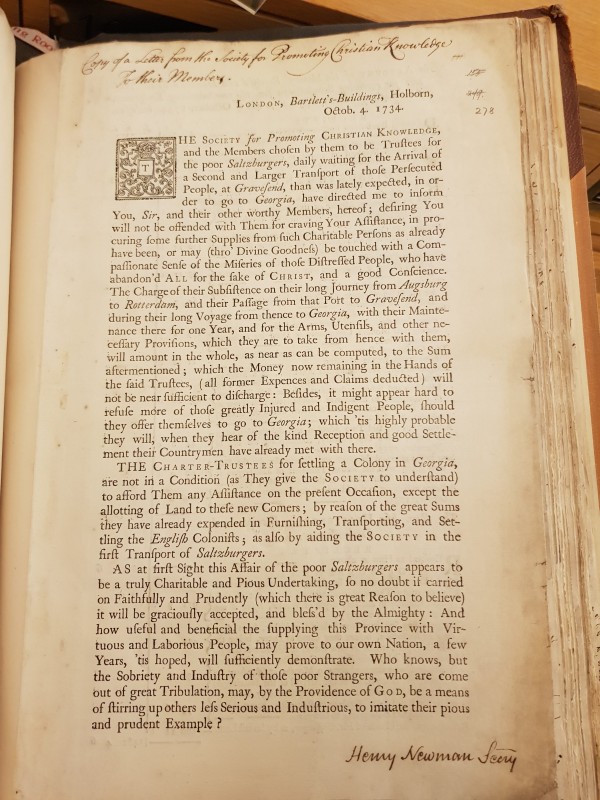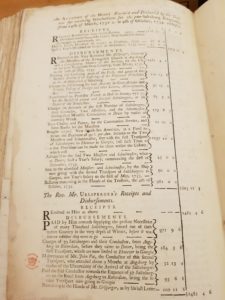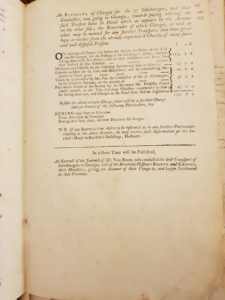By Felicity Roberts

Mary Davis by an anonymous artist. Credit: British Museum.
At the British Museum, near the centre of the Enlightenment Gallery in wall press 156, there is a portrait in oils of a woman with what appear to be horn-like growths coming from the side of her head. The woman has an arresting, impassive facial expression. She wears no cap, so her head is exposed to the viewer, but she is demurely dressed, with her left arm drawn up and across her body so that her hand rests firmly on her collar. She seems to wait patiently for our observation of her to end.
The inscription on the painting reads:
“This is the portraiture of Mary Davis, an inhabitant of Great Saughall near Ches[ter.] Was taken Ano. Dom. 1668, Aetatis 74 when she was 28 years old an excrescence rose uppon her head which continued thirty years like to a wen then grew into two hornes after 5 years she cast them then grew 2 more after 5 years she cast them. These uppon her head have grown 4 years and are to be seen […cropped]”.
Today we would say that Mary Davis had developed cutaneous horns. It is a relatively rare condition in which a lesion or lesions develop on the skin, usually around the face or neck, sometimes protruding several centimetres. Such lesions occur more frequently in older people and on commonly exposed parts of the body. Although their cause has been linked with sun exposure, underlying skin tumours has also been suggested. Even with these medical explanations, a person who develops cutaneous horns today may still be the subject of news reports likening their appearance to that of the devil.
In the seventeenth- and eighteenth-centuries, such persons were treated as both wonders and anomalies of nature [1]. That is to say, their condition was interpreted as both a religious portent and a natural phenomenon. Davis herself was, as an aging widow, exhibited at the Swan pub on the Strand where members of the public could come to see “such a Wonder in Nature, as hath neither been read nor heard of […] since the Creation” [2]. Yet her portrait was also collected by natural philosophers, and the horns she shed entered various cabinets of curiosity, including, it seems, the Ashmolean Museum and the British Museum. Both these specimens are now lost [3]. The interest shown in Davis’ condition is a good example of the overlap that existed between popular and scientific culture in London at the turn of the eighteenth century.
Sir Hans Sloane certainly had an interest in curious objects, especially ones which seemed to transgress the boundaries between human and animal, natural and monstrous. He owned a horn shed by a Mrs French of Tenterden which he entered as specimen 519 in his Humana MS catalogue [4]. He also apparently owned the Mary Davis portrait. In a letter of August 1709 Sloane’s friend Dr Richard Middleton Massey wrote:
“I have been in Cheshire & Lancashire, where I think I have mett with a curiosity, tis an originall picture in oil paint of Mary Davis the Horned Woman of Saughall in Cheshire”
Sloane must have indicated an interest in the portrait to Massey, because in a follow up letter of October 1709 Massey wrote:
“I will send up ye picture the first opportunity if you please call upon Mr Dixon at the Greyhound in Cornhill”
This must be the portrait which now hangs in the Enlightenment Gallery. Did Sloane also own Mary Davis’ horn, which also entered the British Museum but was subsequently lost? I have found no evidence for this in the letters as yet!
The provenance of the British Museum’s painting of Davis has long been shrouded in mystery. Its Collection Online entry states it could have come from either Dr Richard Mead or Sloane. But I think these Sloane letters suggest that the painting was Sloane’s before it became the Museum’s.
[1] For further information, see Lorraine Daston and Katherine Park, Wonders and the order of nature 1150-1750 (New York: Zone Books, 2001).
[2] J. Morgan (ed.), Phoenix Britannicus: being a miscellaneous collection of scarce and curious tracts […] collected by J Morgan, Gent (London, 1732), 248-250.
[3] Jan Bondeson, ‘Everard Home, John Hunter and cutaneous horns: a historical review’, American Journal of Dermatopathology 23 (2001), 362-369.
[4] Natural History Museum, Sloane MS Catalogue of Fossils, 6 vols. Vol 1, f. 344r.





